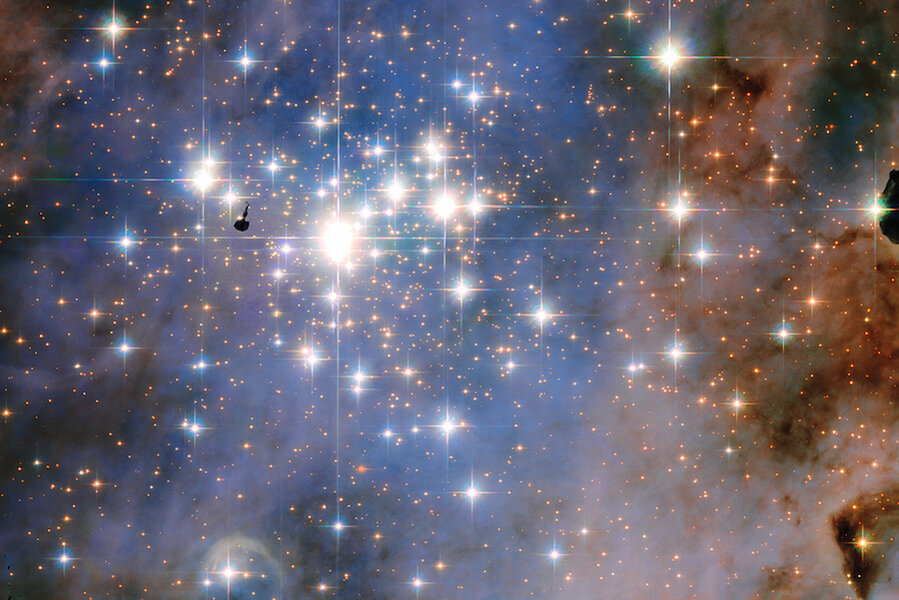Hubble spots 'dazzling diamonds' in space
Loading...
In view of the ESA/NASA Hubble Space Telescope, a cluster of young, super-hot stars have posed for a photo that threatens to steal attention away from the planets and other astronomical wonders.
The stars of the Trumpler 14 star cluster are some of the most luminous in the galaxy, and their abnormally hot temperatures and close proximity illuminates space to a degree rarely seen. The Hubble Space Telescope photo release dubs the stars, “dazzling diamonds.”
“These stars are making a huge impact on their environment. They are literally making waves,” the press release states.
The Trumpler 14 star cluster is the youngest in the Carina Nebula. Estimates place the age of the cluster at 500,000 years old. In comparison, the Pheiades cluster, located in the constellation Taurus, is 115 million years old. Despite its young age, the stars are just a few million years away from their expiration dates.
The young, blue-white stars are paying a price for their luminosity, burning through their hydrogen “ferociously,” according to the NASA press release. The end result will be a dramatic star deaths, complete with supernovae. The stars have a lifespan much shorter than that of the sun, which is expected to last billions of years. The supernovae will help the Trumpler 14 stars complete a cycle of life they have already started.
The super-hot stars are flinging out high-speed particles from their surfaces, according to Hubble press release. The particles send strong winds across space which collide with surrounding objects and materials, according to the Hubble press release. The result is superheated gas, intense bursts of x-rays, and holes torn in nearby gas and dust clouds. The supernovae tear even bigger cavities, which will begin the creation process of new stars, according to the NASA press release.
NASA believes images captured of the Trumpler 14 star cluster even show the work of the stars in action. Speaking about the image posted above, the press release stated:
The peculiar arc-shaped cloud visible at the very bottom of this image is suspected to be the result of such a wind. This feature is thought to be a bow shock created by the wind flowing from the nearby star Trumpler 14 MJ 218. Astronomers have observed this star to be moving through space at some 350,000 kilometers per hour, sculpting the surrounding clumps of gas and dust as it does so.
The Trumpler 14 star cluster is located roughly 8,000 light-years from the center of the Carina Nebula, within the Milky Way galaxy. Although not all have been spotted, astronomers estimate the cluster contains about 2,000 stars, the most prominent of which is HD 93129Aa. According to the Hubble press release, HD 93129Aa is considered one of the brightest stars in the Milky Way galaxy.






